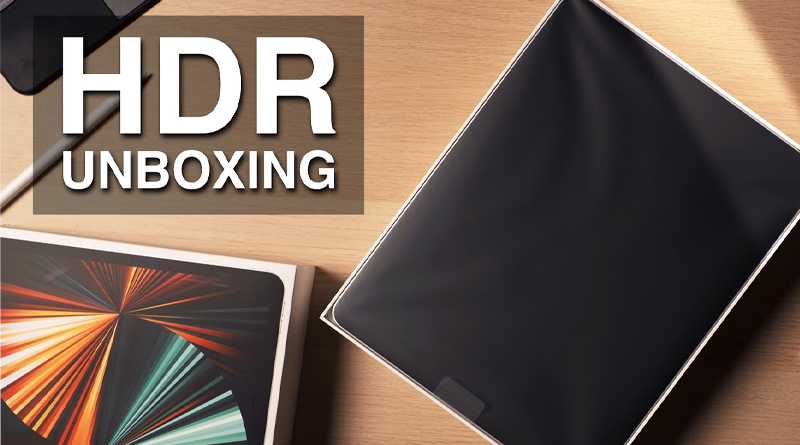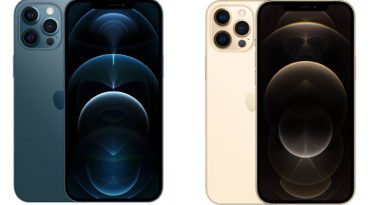What HDR, HDR10, and Display HDR are, and what they mean to Apple users
Numerous gadgets, from TVs to cell phones, promote the capacity to show HDR content. However, the various organizations and names can appear to be confounding. Here’s an iphoneoutfit manual for what the diverse HDR video guidelines intend for you and your recordings.
Throughout the long term, HDR has developed to become a very remarkable component to search for as 4K for TVs, or high-goal evaluates for your Mac or other figuring gadgets. In any case, while the normal client has an ambiguous thought that HDR can offer a superior picture. The presentation of terms including HDR10, Dolby Vision, and HLG recommends there’s much more to picking equipment than first suspected.
On a very basic level talking, there’s not that much for the normal individual to stress over. As by far most of the time, they can in any case watch the HDR content they need to watch.
What is HDR?
Short for High-Dynamic Range, HDR was initially an idea that applied to photography, with HDR pictures consolidating pictures of various openings together to cover a more extensive scope of tones and brilliance levels than a solitary openness would permit.
A standard picture would take into consideration an all-around uncovered photo of a cavern entrance on a splendid summer’s day around early afternoon to in any case show things inside the dull entranceway. HDR allows watchers to see both the splendid components and the dull areas in higher detail than typical.
A similar guideline applies to HDR video, in that a video caught in HDR will take into account a more extensive exhibit of glow at both brilliant and dull levels.
This need to control the splendor of tones implies the capacity to control light yield adequately is a significant factor of HDR. One that numerous individuals don’t actually consider. This is on the grounds that the brilliance of shading can affect how it seems contrasted with a similar shading at a lower splendor.
Average standard unique reach content is dominated for a pinnacle of 100 nits of brilliance. HDR content, which needs to have more scope of potential brilliance levels for its shading portrayal. It can be dominated at a higher 1,000 nits, and for certain configurations, significantly more elevated levels.
Simultaneously, HDR video additionally extends the shading range, taking into account more tones to be utilized to show a picture. One that can be more brilliant and more distinctive to the client. Joined with the radiance, the higher difference levels, and by and large better picture devotion, HDR. video can give an impressively preferable picture over the ordinary standard video designs.
All the more explicitly, a typical HD video will utilize an 8-digit particular. Which the International Telecommunications Union alludes to as Rec.709 or BT.709. While the 10-bit and 12-bit pictures of HDR content hold fast to Rec.2020 or BT.2020. Which involves a far more extensive shading range.
In actuality, a standard unique reach picture may just have roughly 16 million tones to use to make an image. While any HDR video design that is 10-cycle or higher has over a billion to play with.
HDR10
Of the four, HDR10 is by a wide margin the most well-known standard anybody will experience when they investigate HDR video.
it is an open standard that was created by gadget makers and allowed to use by equipment makers. Without paying authorizing expenses to a holding organization. HDR10 is found on basically any piece of current equipment offering HDR abilities.
Its pervasiveness doesn’t really convert into being awesome on the market. Due to a limited extent to being made to be pretty much as available as conceivable to equipment makers.
HDR10 likewise employments “static metadata” as opposed to “dynamic metadata.” While static metadata will give a solitary characterized picture splendor bend that applies to the substance overall, unique metadata can give this equivalent bend to every individual shot or scene, taking into consideration a consummately upgraded picture all through a continually evolving video.
Given the limits of HDR10, just as its omnipresence and the absence of authorization for an open norm. The requirement for makers to make their showcases better than contenders for a similar substance source additionally implies. There’s a serious variety between HDR10-viable gadgets in how the configuration is deciphered and executed. Two screens can call themselves HDR10 consistent yet offer totally various outcomes.
Regardless of these appearing constraints, HDR10 actually gives a preferred picture generally speaking over SDR. So it’s not to be sniffed at. It simply implies that, if a superior supporting standard is accessible. The equipment will utilize that for HDR content were conceivable. Yet it will more likely than not fall back to HDR10. If the help for the other standard isn’t accessible for that specific video.
HDR10+
Just to confound matters, there’s additionally HDR10+, which is advocated by Samsung, Panasonic, twentieth Century Fox, and Amazon. Expanding on top of HDR10, HDR10+ makes changes to the arrangement to incorporate powerful metadata and supports dominating up to 4,000 nits, empowering. It is to have a more splendid and more streamlined picture all through a film.
Actually like HDR10, HDR10+ is likewise an open norm. This implies gadget makers can incorporate help without paying permitting expenses or eminences. This additionally implies it falls into a similar snare of varieties between gadgets as far as execution.
After a sluggish beginning, HDR10+ has been acquiring support from different makers. The all-out number of adopters as of January 2020 coming to 94. This is as yet an apparently low figure given the quantity of AV-related organizations that exist available.
Dolby Vision
Made by Dolby as the name suggests. Dolby Vision is the organization’s interpretation of HDR norms. One that likewise endeavors to go a long way past what present-day. TVs are fit for showing, empowering it to be fairly futureproof.
For a beginning, the standard picks a 12-digit tone rather than a 10-cycle. Which fundamentally expands the number of tones accessible from a billion to more than 68 billion. To watchers, this adequately implies there will be scarcely any apparent banding of tones that may. In any case, show up in 10-bit norms and SDR, and thusly, can create a nearer-to-life picture.
Dolby Vision is likewise ready to be dominated at more significant levels. With content right now dominated at around 4,000 nits. However with the hypothetical most extreme help of 10,000 nits, and with dynamic metadata as well. Now, this is the scholastic most extreme. As it is numerous on various occasions higher than the splendor abilities of present-day TVs.
Dissimilar to HDR10 and HDR10+, Dolby Vision is certainly not an open norm. As organizations need to pay a permit to make content or equipment that utilizes it. Besides, equipment must be endorsed by Dolby. Before it can uphold the norm in any case. That could require a structure with explicit least abilities, which can raise the expense of creation.
This offers an advantage to customers of guaranteeing there’s some degree of consistency between gadgets that help Dolby Vision. While there may, be a few contrasts because of part capacities, like brilliance or differentiation. The Dolby endorsement implies it will not be fiercely excessive. The same as what anybody acquainted with Dolby Vision will hope to see.
Dolby Vision support is offered on a wide scope of gadgets. It being more famous than HDR10+ among gadget merchants, despite the extra expense.
Advanced HDR
Created by Technicolor, Advanced HDR really covers three HDR arranges rather than one.
Single-Layer HDR1 (SL-HDR1) is a telecaster-driven variant that is like HLG. In that, it joins SDR and HDR-viable substances in a solitary stream. As a result, the SDR signal has added dynamic metadata that considers. It is to be changed over into an HDR signal for review. Though without the nature of utilizing higher piece rates.
SL-HDR2 is very comparative in idea to HDR10. Yet with the expansion of dynamic metadata for further developed scene-to-scene picture quality. In contrast to SL-HDR1, there is no SDR-viable variant, making it less alluring for telecasters.
Little is thought about SL-HDR3, however it is accepted to utilize Sony Hybrid Log-Gamma joined with dynamic metadata.
Monitors and DisplayHDR
While HDR principles and backing are generally notable and perceived for TVs. Things are to some degree diverse with regards to screens. As a rule, a screen will uphold HDR10 at least. However, there is more separation at play than just what norms work with a screen.
DisplayHDR and the friend DisplayHDR True Black are elite screens and show consistent test details from VESA . It calls the showcase business’ first open norm for determining HDR quality. It is utilized to quantify components including luminance, shading range, bit profundity, and different components.
The thought is that a screen is tried and given accreditation at one of the various execution levels. The levels incorporate Display HDR 400, 500, 600, 1000, and 1400. Just as 400 True Black and 500 True Black, with True Black, saved for OLED shows.
The presentation models cover the base luminance levels, dark levels, dynamic diminishing. In a checkerboard, shading range and least luminance tests, least piece profundities. The “ascent time” between dark to most extreme luminance, and white point exactness. The better the presentation plays out. The higher up the levels it can go. The maker can put a logo on the case for the screen proclaiming its confirmation.
VESA additionally offers a rundown, everything being equal, and note pads that have passed its DisplayHDR confirmations, arranged by level.
The DisplayHDR testing is simply deliberate for the producers to attempt. The rundown of affirmed shows isn’t thorough of the whole business. As screen makers can in any case sell shows as having HDR support with no of the testing. It is ideal to regard DisplayHDR as an extra aide while choosing a screen to purchase.
For instance, the LG Ultrafine Ergo 32-inch screen doesn’t have a DisplayHDR certificate, however, it actually has support for HDR10. Its pinnacle brilliance of 350 nits may cause. An HDR10 video to show up uniquely in contrast to a TV that might have the option to deliver all. The lighter and is nearer to the 1,000-nit top splendor HDR10 upholds.
Additionally, recollect that nothing is preventing you from essentially connecting a Mac to a TV. Which may have more shots at having Dolby Vision support.
Apple’s HDR video support
Apple to a great extent offers support for two HDR guidelines for video playback, with HDR10 or Dolby Vision. For the most part, offered on viable equipment.
For iPhones, all iPhone 11-age models are equipped for playing back HDR10 and Dolby Vision content, alongside. The second-age iPhone SE, iPhone XS, iPhone XR, iPhone X, and iPhone 8.
On iPad, support stretches out from the second-age iPad Pro onwards, however not other iPad models.
Mac offers a help page offering the mixes of Mac or MacBook with HDR backing and regardless.
The Apple TV 4K is the solitary model to offer HDR playback, with both HDR10 and Dolby Vision support. However, it requires a TV with 4K help also. The Apple TV HD doesn’t uphold HDR in any structure.
Inside Apple’s computerized retail facades, Apple sells motion pictures and TV shows in HDR, with some moreover supporting Dolby Vision. Both are related to logos for either HDR or Dolby Vision.



